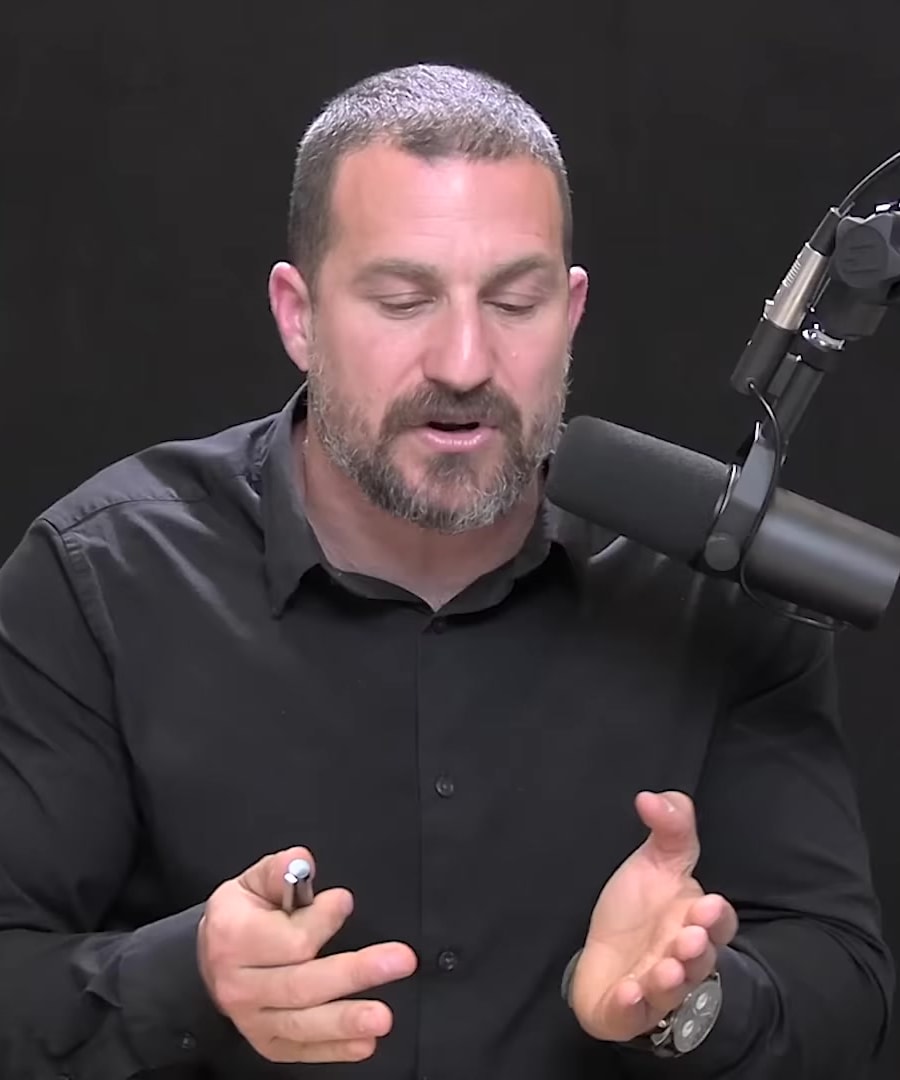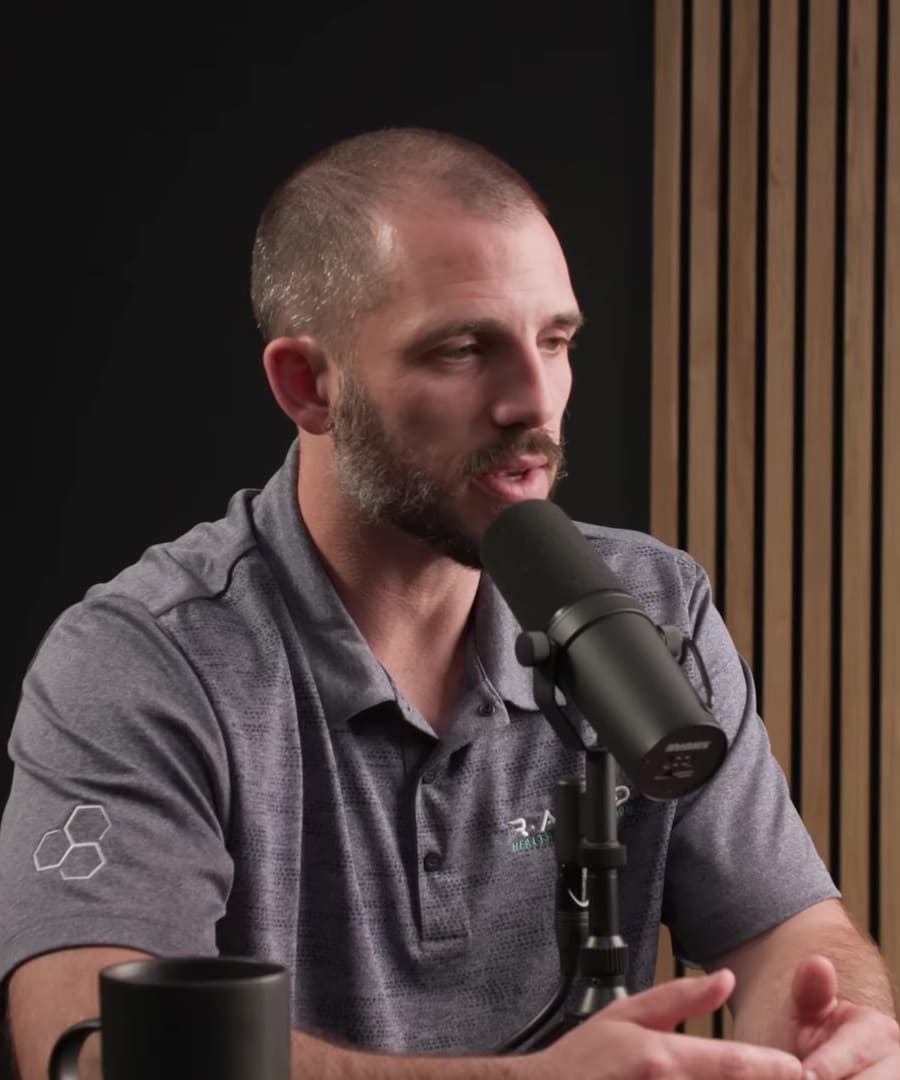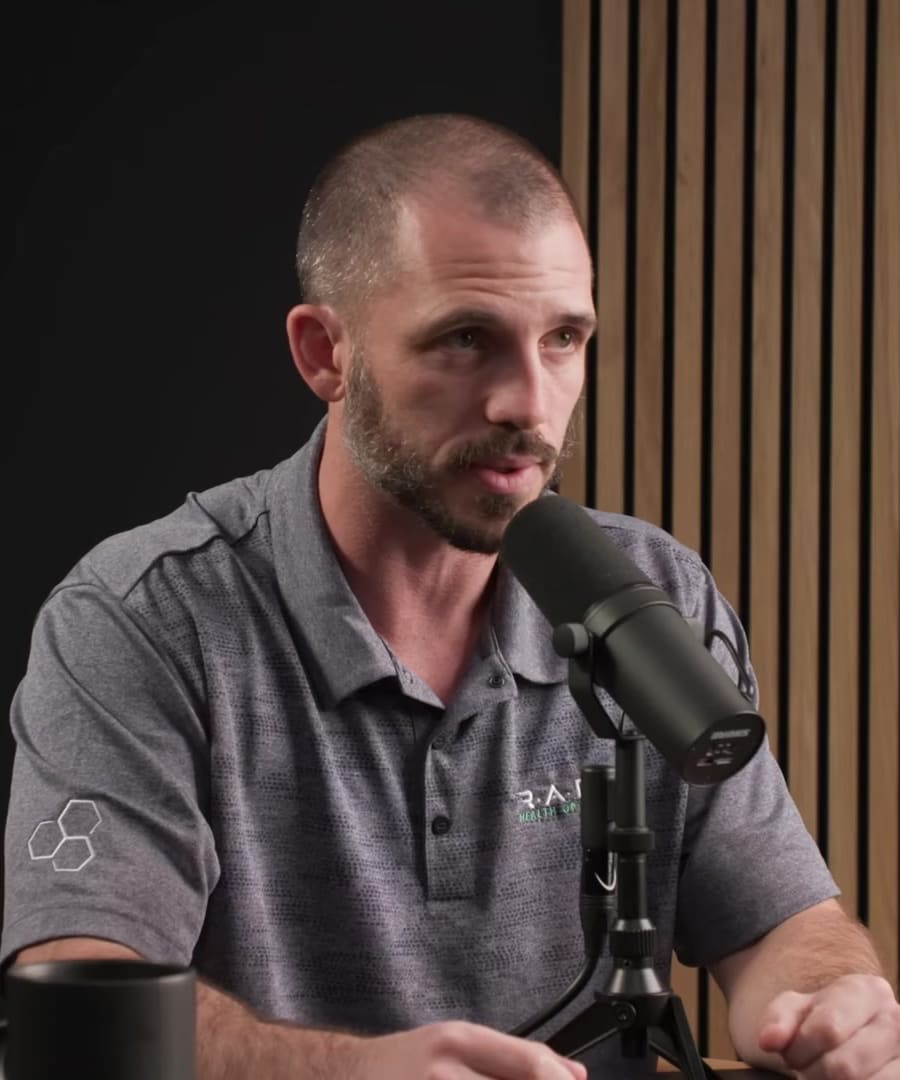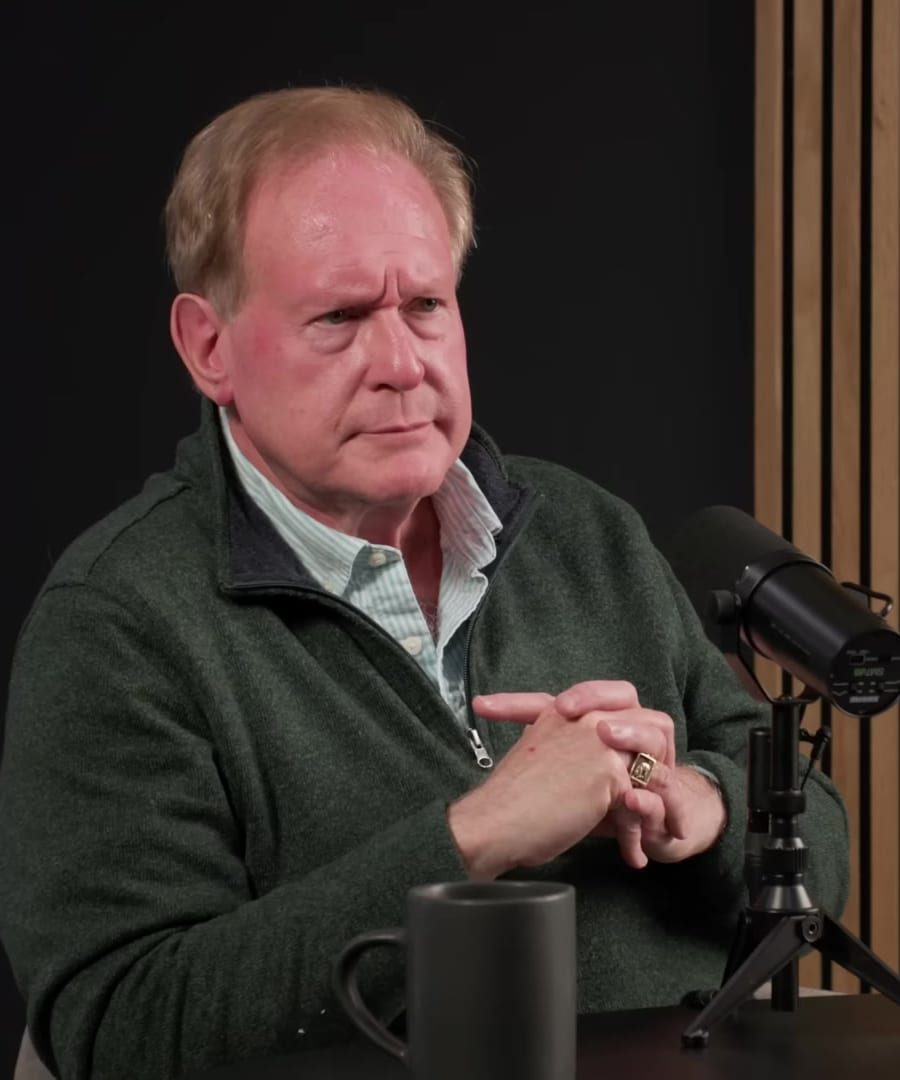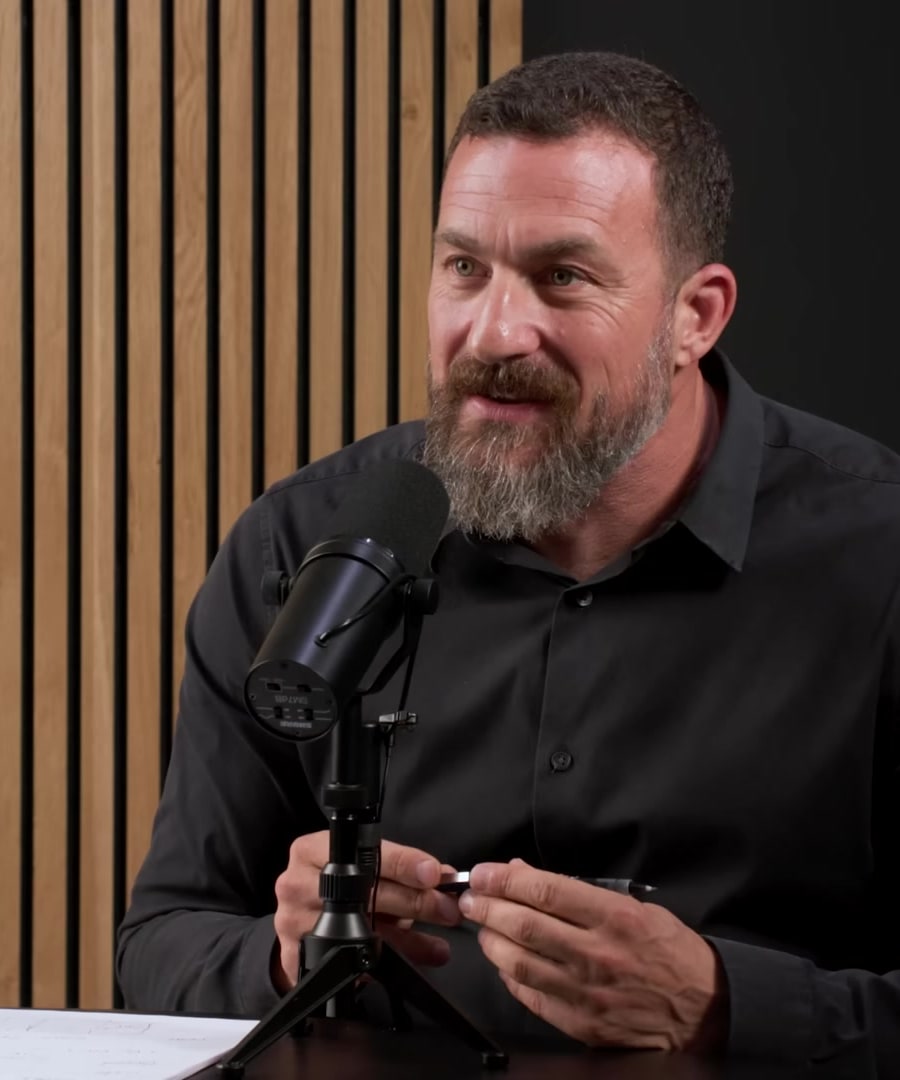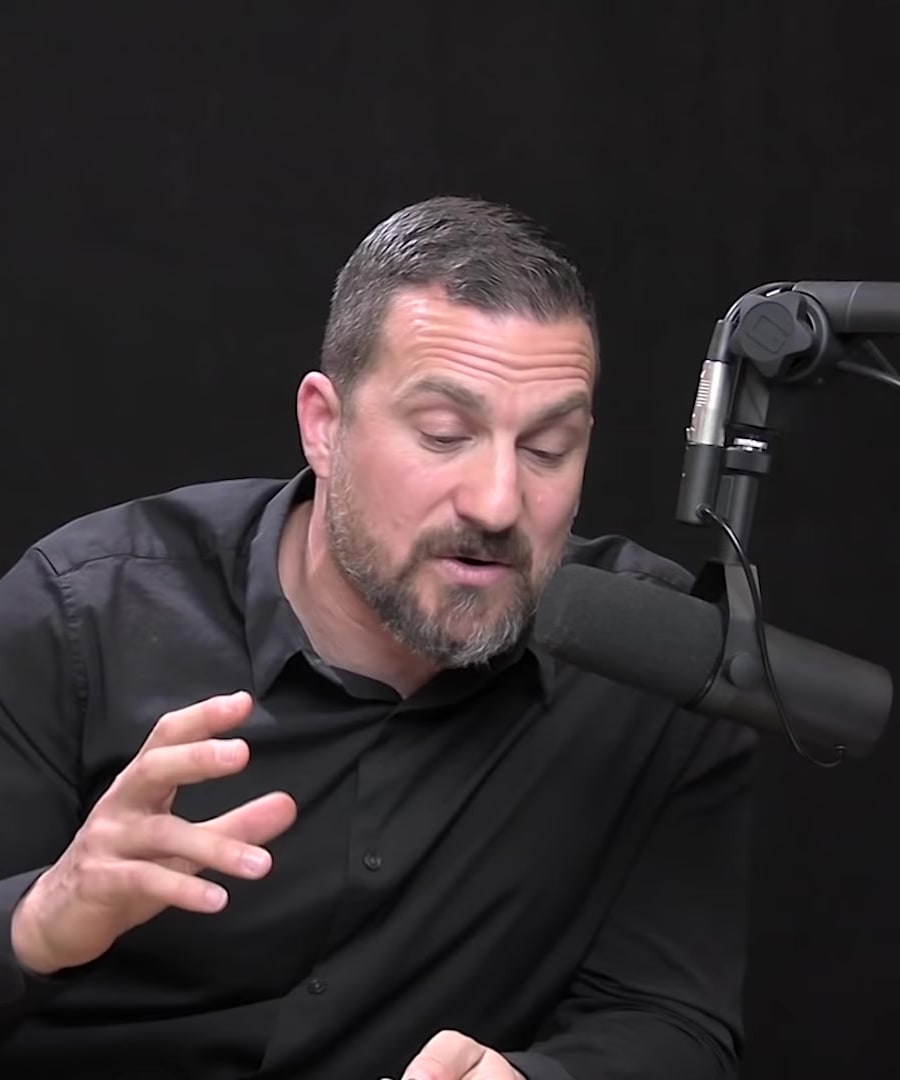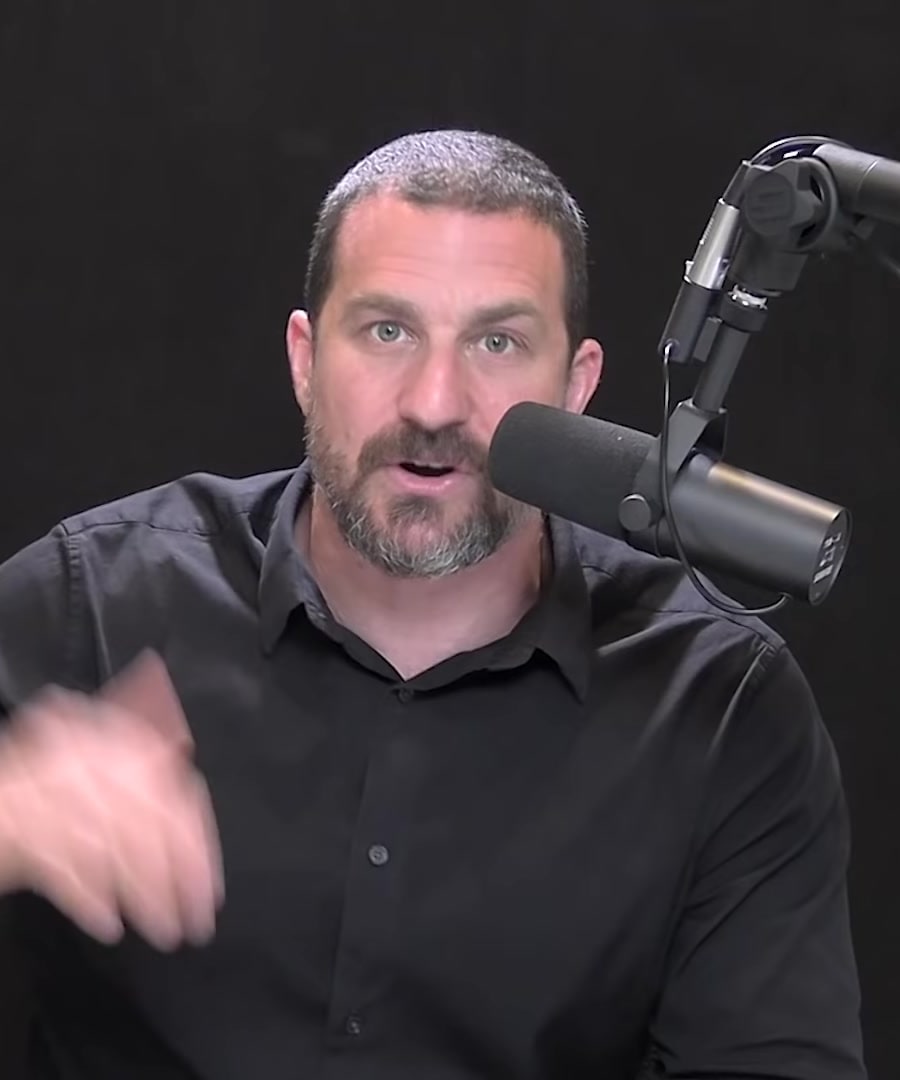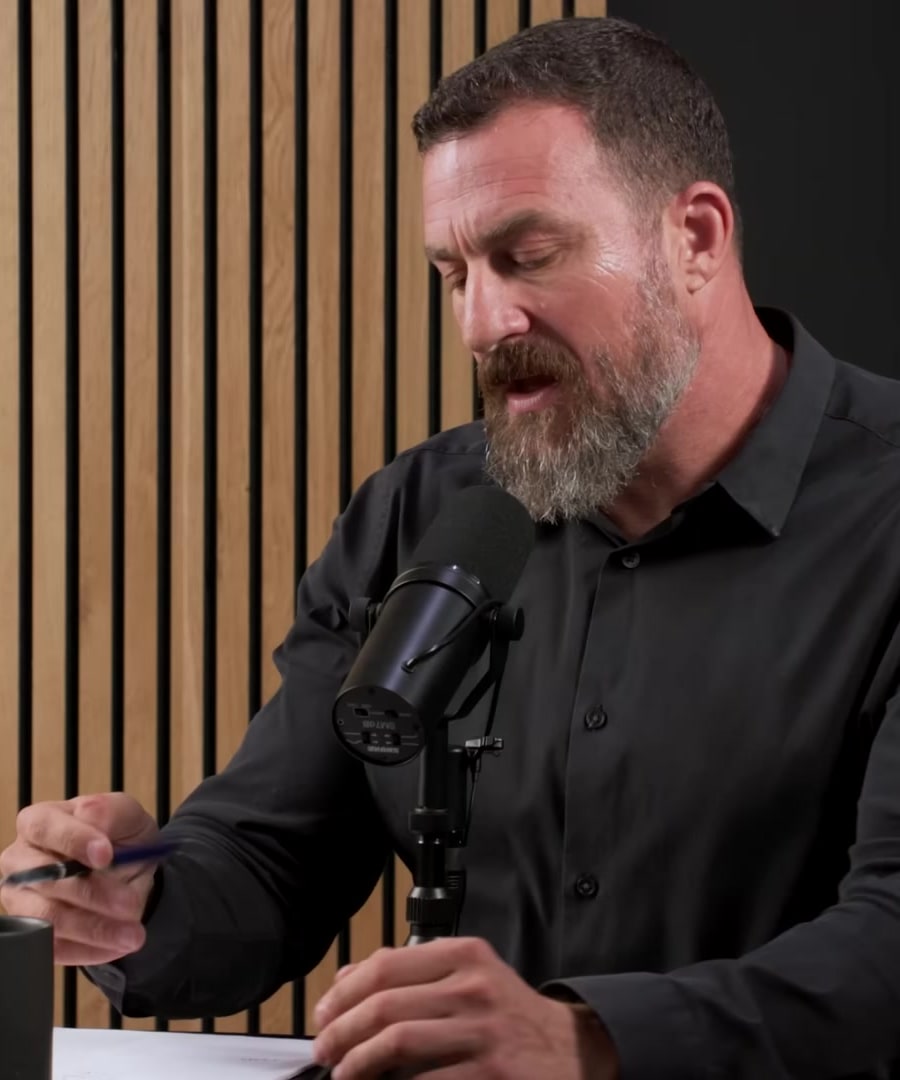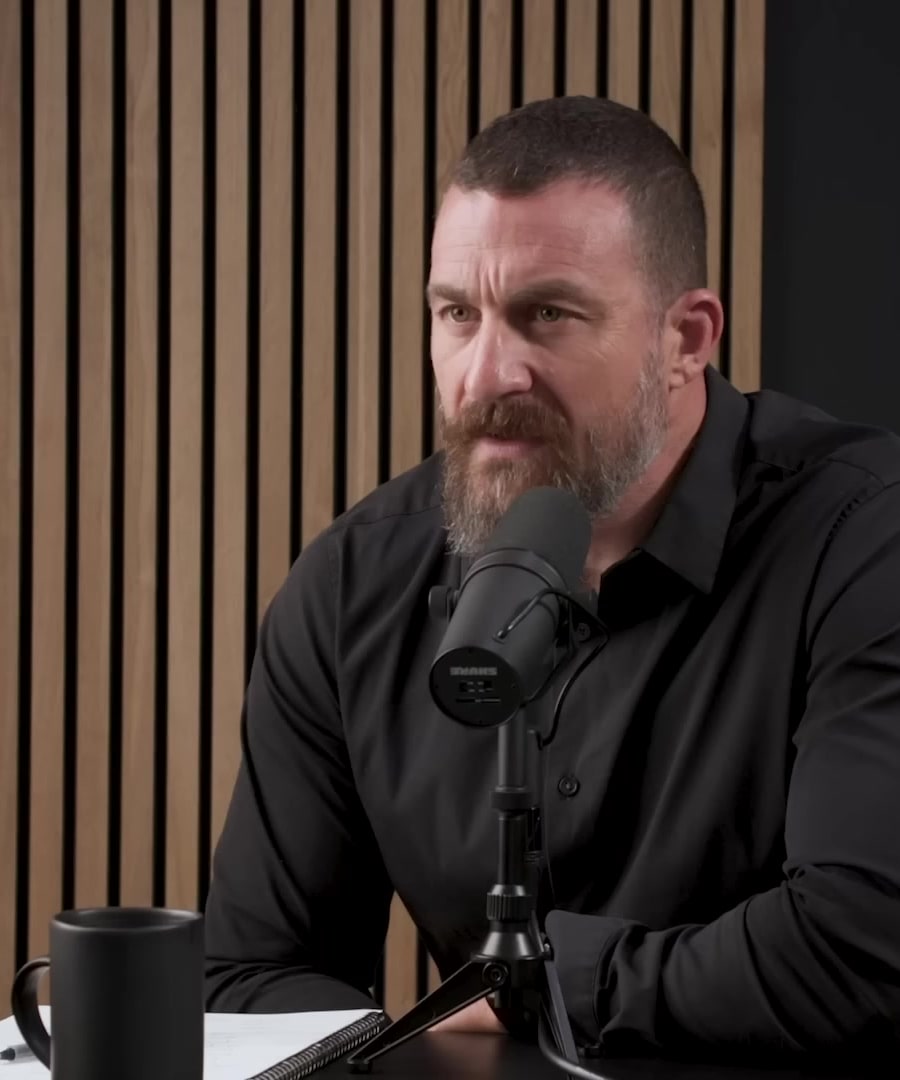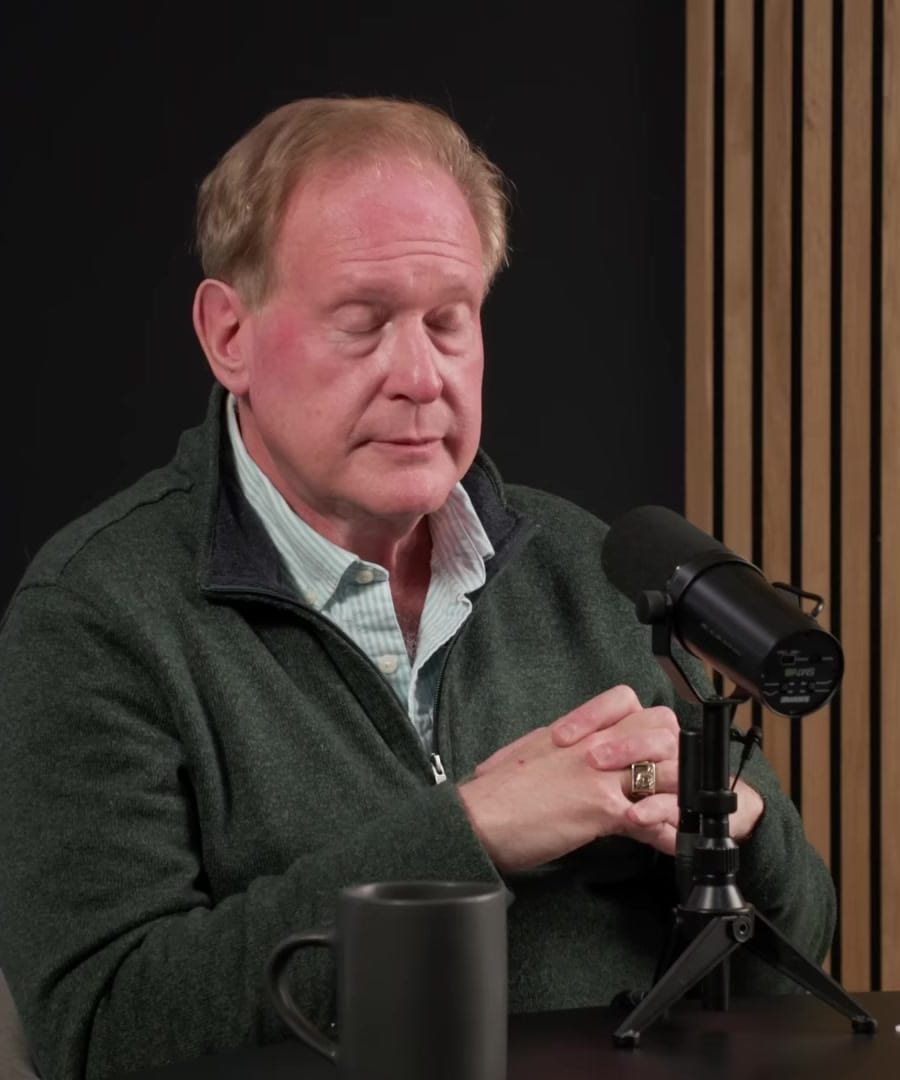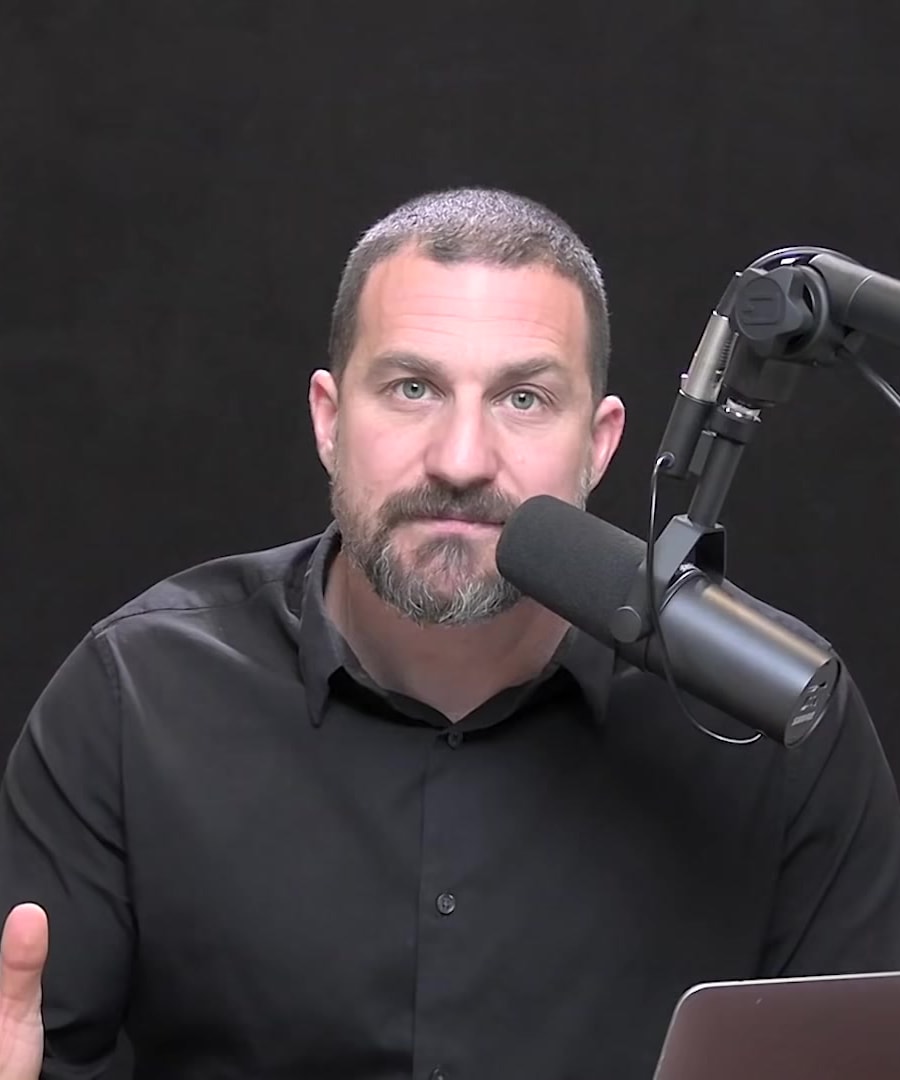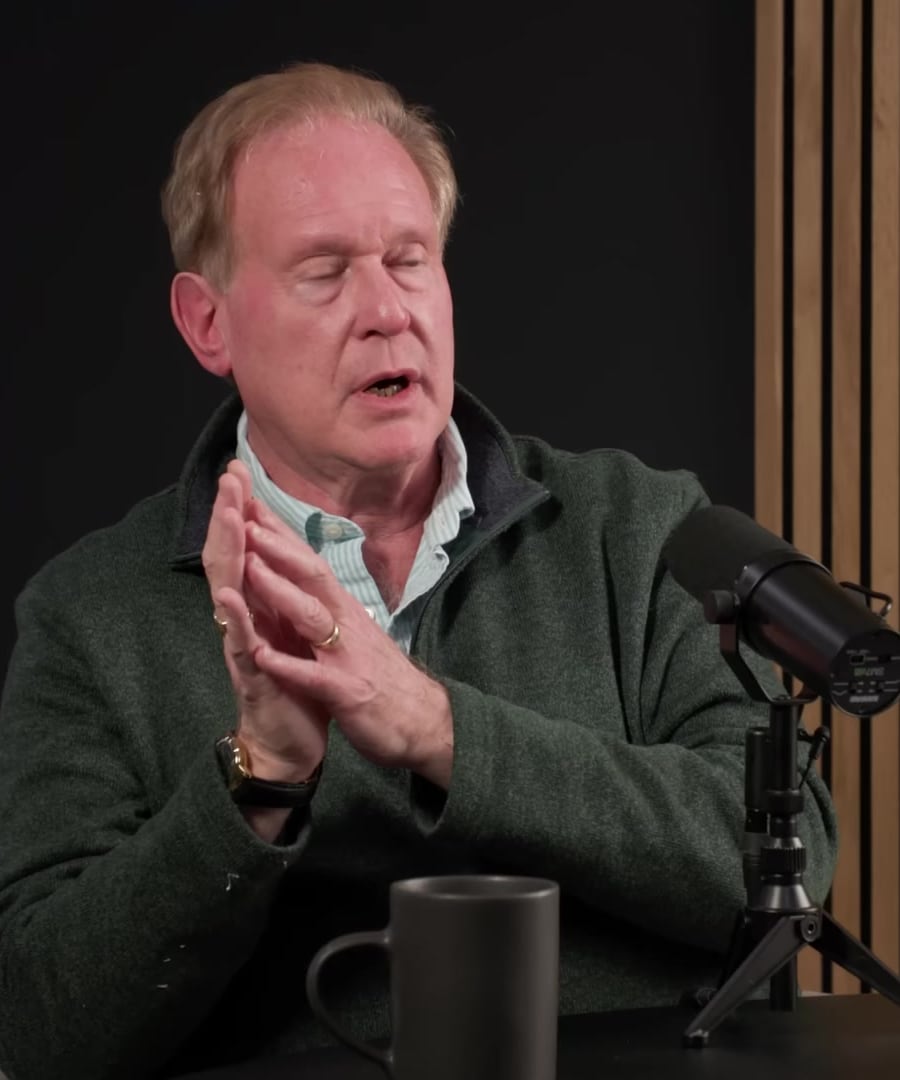How to lose body fat quickly
Sources:
To lose body fat quickly, suggests several key strategies based on scientific evidence:
-
High-Intensity Training: Engage in high-intensity training followed by low intensity or no exercise, especially if done while fasted. This optimizes fat loss by depleting glycogen stores and then shifting to fat oxidation 1.
-
Fasting Before Exercise: Fasting before intense exercise can enhance body fat burning, so consider exercising intensely for 20 to 60 minutes, then transition into moderate or steady-state exercise to maximize fat oxidation 2.
-
Rapid Weight Loss Approach: Research suggests that obese individuals who lose more weight quickly are more likely to keep it off. This implies that a structured approach to rapid fat loss can be effective, taking into account caloric restriction and increased physical activity 3.
-
Time-Restricted Feeding: Following a time-restricted eating schedule can bias weight loss towards fat loss when in a state of caloric restriction, helped by metabolic changes that shift the burn toward lipolysis 4.
-
Different Fuel Sources in Exercise: Fat, protein, and carbohydrates can all work as fuel for creating a caloric deficit which is essential for fat loss. Various diet strategies can be viable, depending on individual preferences and goals 5.
-
Types of Exercise: There are three types of training for fat loss: high-intensity interval training (HIIT), sprint interval training (SIT), and moderate-intensity continuous training (MICT). Each affects metabolism and hormones differently 6.
-
Cold Exposure: Use cold exposure and shivering correctly as they can accelerate fat loss through mobilization and oxidation of fatty acids. Cold-induced shivering can stimulate robust fat loss by increasing metabolism 7.
For effective fat loss, these strategies should be tailored to individual needs and capabilities, and it's critical to consult with healthcare professionals before undertaking any significant changes in diet or exercise routines.
RELATED QUESTIONS-
What are some effective workout routines for fat loss?
Sources:
Effective workout routines for fat loss, as discussed on the , encompass a variety of approaches. Here are some key routines based on the insights shared by and other experts on the show:
-
Combining High-Intensity and Low-Intensity Training: Incorporate high-intensity training followed by periods of low-intensity training or regular daily activities. This can optimize fat loss, especially when performed while in a fasted state 1.
-
High-Intensity Interval Training (HIIT): Engage in exercises like sprints, burpees, or similar forms of anaerobic exercise that are of higher intensity and tap into glycogen stores. This leads to a higher percentage of fat being burned post-exercise due to increased post-exercise oxygen consumption 2.
-
Focused Strength and Hypertrophy Training: A combination of hypertrophy and muscular endurance training, interspersed with strength training, can help drive fat loss and muscle growth 3.
-
Exercise Selection Based on Personal Preference: Choose exercises that you are willing to adhere to over time. If high-intensity training is too demanding or doesn't interest you, moderate steady-state exercises can be equally effective for fat loss 4.
-
Progressive Exercise Programs: Employ a systematic approach for progressive muscle building and fat loss over longer periods, such as a 12-month plan with quarterly goals. This can involve different phases with varying priorities, including strength training, cardiovascular exercise, and rest 5.
-
Exercise that Induces Significant Breathing Activity: Activities that increase your rate of respiration, whether they are weightlifting, interval training, or steady cardio, can be effective at stimulating fat loss due to increased carbon dioxide exchange 6.
-
Sprint Interval Training (SIT) and Moderate Intensity Continuous Training (MICT): Alternatives to HIIT include SIT, which involves all-out activity for short durations, and MICT, which is steady state cardio at moderate intensity over longer durations 7.
It's important to note that the best workout routine for an individual will largely depend on personal preference, physical ability, time constraints, and specific goals. The consistency and regularity of a chosen exercise routine are key factors in its effectiveness for fat loss.
RELATED QUESTIONS-
What are some effective fat loss workouts?
Sources:
Effective fat loss workouts include various types of exercise that stimulate metabolism and promote the burning of body fat stores. Here are some strategies and types of workouts discussed on the :
-
High-Intensity Interval Training (HIIT): Exercise at high intensity for short bursts followed by rest or low-intensity periods. This type of training is highly efficient for fat loss and increasing metabolism 1.
-
Sprint Interval Training (SIT): All-out sprints of 8 to 30 seconds, followed by recovery periods. These are high-intensity efforts that are capable of exceeding 100% VO2 max and are interspersed with lower-intensity recovery periods 2.
-
Moderate Intensity Continuous Training (MICT): Also known as steady-state or Zone 2 cardio, involves longer periods of exercise (20 to 60 minutes) at a moderate intensity of 40 to 60% VO2 max 2.
-
Combination of Strength and Cardiovascular Training: Combining strength training, hypertrophy, muscular endurance, and cardiovascular training in a session may also enhance body fat loss. This strategy does not necessarily need to be done fasted to be effective 3.
-
Personalized Guidelines: Adapting workouts according to personal goals is essential. For example, if losing body fat is the priority, incorporate that more prominently in your workout routines 4.
Implementing these workouts three to four times a week, with a focus on creating specific adaptations, can lead to effective fat loss 5. Always ensure that your workout plan is tailored to your individual physical condition and goals, and consider consulting with a professional trainer or healthcare provider before beginning any new workout regime.
RELATED QUESTIONS-
Can you provide me with specific workout plans for fat loss?
Sources:
The provides insights on various approaches to exercise that can be utilized for fat loss. Specific workout plans are not explicitly laid out in the form of daily or weekly routines, but rather the principles behind effective protocols are discussed. Here are some key takeaways you could use to structure your workouts:
-
High-Intensity Workouts: Engage in high-intensity training three or four times a week, which could involve weights or body movements like burpees, push-ups, sit-ups, and pull-ups. The goal of these sessions is to breathe hard for about 20 to 30 minutes. After these sessions, you could hydrate and continue with your day, which includes low-intensity activities like walking or taking calls 1.
-
Adapting to Goals: Workouts should be adapted to your specific goals and needs. This could involve certain adaptations if fat loss is a high priority, such as emphasis on muscle endurance and hypertrophy 2.
-
Combining Exercise Types: For example, you could conduct a workout session involving 45 to 60 minutes of strength, power, or hypertrophy training followed by some steady-state cardiovascular exercise. The structure of this workout would vary based on personal adaptations and goals, particularly when focused on fat loss 3.
It's important to remember that individualization plays a crucial role in the effectiveness of a workout plan. Your plan should reflect your personal fitness levels, health status, goals, and preferences. It may be beneficial to consult with a fitness professional to create a detailed plan tailored to your unique situation.
RELATED QUESTIONS-
What are specific hiit training exercises to do?
I apologize, but it seems there are no specific clips in the data that detail exact high-intensity interval training (HIIT) exercises. However, typical HIIT workouts often consist of short bursts of intense exercise followed by rest or lower-intensity periods. Here are some common types of exercises that can be incorporated into a HIIT routine:
- Sprinting or speed walking
- Burpees
- Jump squats
- High knees
- Mountain climbers
- Kettlebell swings
- Push-ups
- Jumping jacks
- Cycling sprints
While the podcast may not have provided explicit HIIT workout plans, these exercises can be structured into a HIIT format, typically involving 20–30 seconds of intense effort followed by a brief rest period. Repeat this cycle for a set number of rounds or for a specific time duration.
For personalized HIIT workout plans, please consider consulting a fitness professional who can design a program suited to your fitness level and goals.
RELATED QUESTIONSHow does the body lose fat quickly
Sources:
To lose body fat quickly, certain strategies can enhance fat loss effectively. emphasizes a combination of high-intensity training followed by low to moderate intensity training as a powerful approach. Additionally, exercising in a fasted state can burn more body fat per unit time 1.
Adrenaline plays a crucial role in fat loss, being triggered by both intense movement and low-level activities such as shivering or cold exposure, which can accelerate fat loss through fat mobilization and oxidation 2. Implementing cold exposure correctly, such as with controlled shivering, can stimulate fat loss strongly 3.
Moreover, time-restricted feeding can also promote fat loss. By following a schedule with periods of fasting, and maintaining a caloric deficit, the body can shift towards burning more fat 4.
Understanding these mechanisms employed by the nervous system can lead to more effective fat loss strategies that go beyond the calories in versus calories out paradigm 5. It's also important to note that as body fat decreases, the proportion of weight loss from lean mass increases, especially in people with lower body fat percentages; this aspect should be managed appropriately to prevent muscle loss 6.
Always consult a healthcare professional before adopting a new exercise or diet regimen to ensure it is safe for you, given your health status and goals.
RELATED QUESTIONSTell me more about fat loss strategies.
Sources:
In the discussion on fat loss strategies, and outlined several insights and approaches:
-
Breathing and Fat Loss: They discussed that while hyperventilation increases adrenaline, which can aid in fat loss, it is not sustainable as a long-term strategy. Exercise that increases respiration rate is effective for fat loss, promoting consistent energy demand and increased exhalation 1.
-
High-Intensity Training: A combination of high-intensity training followed by low to moderate intensity training is recommended to optimize fat loss. This approach is especially effective when done in a fasted state, as it taps into body fat stores more efficiently 2.
-
Types of Exercise: The type of exercise may not significantly affect fat loss as long as the total energy expenditure is the same. Low-energy activities such as shivering from cold exposure also increase calorie burn through non-exercise activity-induced thermogenesis (NEAT) 3.
-
Misconceptions about Fat Burning: Exercising fasted or at lower intensity does not necessarily result in more fat loss. The key factor is the overall energy balance rather than the proportion of fuel coming from fat or carbohydrates during exercise 4.
-
Comprehensive Strategy: For maximizing fat loss, the form of training (steady state vs. intervals) might not be as significant as previously thought, as long as exercise is challenging and creates an energy deficit 5.
-
Macronutrient Considerations: Low-carb diets can affect performance and the usage of fat as a fuel source, especially during high-intensity activities. These diets might be effective for weight management for individuals who engage in low-intensity or limited exercise 6.
-
Calories Out: Ultimately, losing body fat involves creating an energy deficit, where caloric intake is less than caloric expenditure. Fat leaves the body primarily through respiration, as a byproduct of metabolism 7.
These insights emphasize the importance of consistent energy expenditure and creating an energy deficit to achieve fat loss. It also highlights that the type of fuel used during exercise is less important than the total energy balance over time.
RELATED QUESTIONS-
Can one lose fat without exercise? What should I do?
Sources:
Yes, it is possible to lose fat without exercise, although incorporating physical activity can accelerate and optimize the process. has outlined several strategies for fat loss that are not centered around traditional exercise:
-
Non-exercise Activity Thermogenesis (NEAT): Increasing everyday activities like standing, walking, and fidgeting can greatly increase caloric burn and contribute to fat loss. NEAT encompasses all the energy expenditure that comes from activities other than sleeping, eating, or sports-like exercise 1.
-
Shiver-Induced Fat Loss: Using cold exposure to induce shivering can increase caloric expenditure and thermogenesis, which can help burn fat. Dr. Huberman suggests a protocol for cold exposure that involves getting into a cold environment, like an ice bath or cold shower, shivering, then allowing the body to warm up naturally 2.
-
Dietary Adjustments: Making changes to your diet by reducing intake of refined carbohydrates, sugars, increasing fiber, and being mindful of overall calorie intake can significantly impact fat loss. Choosing lean protein sources and avoiding processed foods can also help manage insulin levels, which is important for fat metabolism 3.
-
Proper Nutrition: Utilizing web-based tools that categorize foods based on their metabolic effect rather than nutrient content can guide you in making healthier food choices that support fat loss goals. These tools can filter out highly processed foods and recommend options that are more conducive to fat metabolism 3.
Remember, the key to losing fat is creating an energy deficit where calories burned exceed calories consumed, even if that deficit is created without traditional exercise. It's essential to approach weight loss sustainably and healthily, and consulting with healthcare professionals can provide personalized guidance for effective fat loss strategies.
RELATED QUESTIONS-
What are some dietary tips to lose fat without exercise?
Sources:
To lose fat without exercise, here are some dietary tips mentioned by and on the :
-
Prioritize Movement Throughout the Day: Even without formal exercise, increasing general daily activities can contribute to overall calorie expenditure.
-
Eat Well: Focus on high-quality foods, including lean proteins and high-fiber items, to manage insulin levels and support fat metabolism.
-
Mindful Eating Habits:
- Consider meal timing strategies, such as occasionally skipping breakfast or lunch.
- Limit or avoid alcohol, as it can add empty calories.
- Savor small treats, like a piece of dark chocolate, which can satisfy cravings without a high calorie count.
-
Label Awareness: Utilize tools that help understand the metabolic effect of foods. They offer guidance on selecting items that promote better health and avoid those that contribute to chronic metabolic diseases.
-
Reduction of Refined Carbohydrates and Sugars: Minimize your intake of processed sugars and refined carbs, which can spike insulin and hinder fat loss.
-
Increase Fiber Intake: Higher fiber foods can improve satiety and regulate blood sugar levels, aiding in weight control.
-
Consume Low Insulin-Stimulating Foods: Choose foods like fish and pasture-fed meats over those high in branch chain amino acids, which can trigger higher insulin levels.
A web-based tool, mentioned by , called PERFECT, categorizes foods not by nutrient content, but based on their metabolic effects. This tool might be helpful in choosing appropriate foods and avoiding highly processed items, especially those falling under the NOVA food classification system's class four, which are associated with chronic metabolic diseases 1.
Consulting with a dietitian or healthcare professional can provide more personalized guidance according to individual needs and conditions.
RELATED QUESTIONS-
Could you provide some meal planning tips for fat loss without exercise?
Sources:
For meal planning aimed at fat loss without relying on exercise, the following strategies were highlighted by guests on the :
-
Cyclical Ketogenic Diet: Implement a structured diet that restricts carbs on certain days and includes a "cheat day" to potentially encourage fat loss and provide a psychological break from strict dieting.
-
Glycogen Depletion Workout: On a cheat day, start with a workout that depletes glycogen stores to potentially limit the fat gain from overconsumption of calories.
-
Gradual Regulation: As your body adjusts, you might naturally reduce the excess of cheat day consumption to more moderate levels.
-
Morning Nutrition: To avoid overeating later in the day, include a protein-rich breakfast like cottage cheese or whey protein. This can help with satiety and prevent a large caloric intake at night.
-
Avoid Calorie Counting: Instead of focusing on calories, the emphasis is on the consumption of foods that are naturally self-limiting due to their high fiber and protein content, making overeating less likely.
-
Resource Accessibility: Information regarding the Slow Carb Diet followed by can be found on his blog, which outlines the diet's principles and how to get started without the need for additional purchases.
These tips are based on personal experiences and should be adapted to individual needs and preferences. For specific dietary plans and health advice, it's always important to consult with a healthcare provider or a dietitian to ensure safety and effectiveness 1.
RELATED QUESTIONS-
Could you provide some meal planning tips for fat loss without exercise?
Sources:
To plan meals for fat loss without incorporating exercise, , shared several strategies on the :
-
Cyclical Ketogenic Diet: Use a cyclical approach to ketogenic dieting, where you have days with low carb intake followed by a cheat day. This can stimulate fat loss and also offer a psychological break from dieting.
-
Glycogen Depletion: On a cheat day, performing a glycogen depletion workout can help limit potential fat gain from consuming excess calories.
-
Regulating Cheat Days: Over time, regulate your cheat day indulgences by scaling back the amount you consume once your body adapts.
-
Morning Protein: Include a high-protein breakfast to help with satiety and prevent overeating later in the day. Cottage cheese or whey protein can be good choices.
-
Avoid Calorie Counting: Focus on eating foods that are rich in fiber and protein which tend to be naturally self-limiting, instead of counting calories. These foods can help you feel full and reduce the likelihood of overeating.
-
Accessibility of Resources: You can research the Slow Carb Diet mentioned by Tim Ferriss for guidelines on how to start without any additional purchases, by looking up "Slow Carb Diet" on Tim's blog.
These tips are based on Tim Ferriss's personal practices and insights shared during his conversation with 1]. Consult a healthcare provider before making significant changes to your diet, especially if you have pre-existing health concerns.
RELATED QUESTIONS-
What foods are high fiber low carb for fat loss?
Sources:
For fat loss, a diet emphasizing foods high in fiber and low in carbohydrates can be beneficial. Here are some foods and strategies mentioned in the :
-
Fruits and Vegetables: Include a variety of fruits and vegetables, as these are naturally rich in fiber and have low energy density. They can help you feel full while consuming fewer calories.
-
Whole Grains: Choose whole grains over refined grains, as they contain more fiber. Look for whole grain bread with a carbohydrate to fiber ratio of somewhere between 3 to 1 to 5 to 1, which indicates less fiber has been stripped away [1].
-
Legumes: Foods like beans, lentils, and peas are excellent plant-based sources of fiber and protein.
-
Nuts: Incorporating nuts into your diet can boost fiber intake and provide healthy fats.
-
High Fiber Diet: Aiming for a high fiber intake, potentially over 40 grams per day, can have positive effects on diet and overall health. This can lead to less consumption of meat, animal-based protein, and fats, alongside more plant-based proteins [2].
-
Balance of Energy: Keep in mind that managing the balance of energy in versus energy out is critical for weight loss. While food labels can have inaccuracies, consistency in tracking can help maintain reasonable control over caloric intake [3].
Remember, individual responses to dietary fiber can vary in terms of metabolizable energy based on one's gut microbiome, so these guidelines may need tweaking to fit personal digestive health and energy needs [4].
These foods and principles provide a framework for planning meals that could help with fat loss, even without the incorporation of exercise. Always consult a healthcare provider before making significant changes to your diet or nutrition plan, particularly if you have pre-existing health conditions.
RELATED QUESTIONS-
What fruits and vegetables specifically are low carb?
Sources:
The has not provided specific lists of low-carb fruits and vegetables in this context. Generally, when looking for low-carb options in fruits and vegetables, most berries are lower in carbs and high in fiber, such as raspberries, blackberries, and strawberries. In terms of vegetables, leafy greens, cucumbers, broccoli, cauliflower, and bell peppers are typically low in carbohydrates while also being rich in nutrients and fiber.
For tailored dietary advice, consulting a nutritionist or utilizing specific dietary guides can help in selecting the right mix of low-carb, high-fiber foods to support fat loss and overall health.
RELATED QUESTIONSCould you share some low-carb recipes involving fruits and vegetables?
Sources:
The hasn't provided detailed low-carb recipes involving fruits and vegetables, but does discuss his own dietary approach which includes meals and snacks that align with a low-carb or ketogenic diet. Here are related insights:
- For a low-carb snack, enjoys Magic Spoon cereal, which he might combine with Bulgarian yogurt and cinnamon 1.
- He prefers low-carb meals such as meat with salad and nuts for lunch, maintaining focus without inducing sleepiness. However, he does consume carbs like oatmeal or rice after intensive exercise 2.
These insights offer a framework that can be used to create low-carb recipes:
- Pair a protein (e.g., grilled chicken or fish) with a salad using leafy greens and low-carb vegetables such as cucumbers or peppers.
- Mix full-fat yogurt with a small serving of berries for a low-carb breakfast or snack.
- Consider consuming a controlled portion of healthy carbs post-exercise.
Remember that these ideas are based on personal practices shared by rather than specific recipe recommendations. For recipes, you may want to consult resources specializing in low-carb or ketogenic dietary plans.
RELATED QUESTIONSWhy do I get a headache after eating?
Sources:
There are several reasons why one might get a headache after eating, and these can vary based on individual biology and the types of foods consumed. Here are some insights based on the data from Huberman Lab:
-
Food Composition: Some individuals, like , note that eating foods with high sugar content or those that are heavily refined, such as those containing high fructose corn syrup, can trigger headaches. These foods can dysregulate reward circuits and potentially lead to headaches due to these sudden changes 1.
-
Hormonal Response: When we consume food, our body has a hormonal response that includes alterations in blood glucose levels, which may contribute to headaches in some individuals. For example, when blood glucose spikes rapidly after eating certain kinds of carbohydrates, it may lead to discomfort, including headaches, due to abrupt biochemical changes in the body 2.
-
Inflammatory Response: Ingesting foods that cause an inflammatory response, such as extremely spicy foods, might also cause severe types of headaches like thunderclap headaches due to hyperconstriction of blood vessels in the brain, although this is relatively rare 3.
Furthermore, mentions that in his own experience, taking glucose scavengers like berberine can cause massive headaches unless combined with a significant intake of sugars and carbohydrates, suggesting that some individuals might be particularly sensitive to certain substances or dietary interventions 4.
It's essential to identify the specific trigger for your headaches and consider seeking medical advice to better understand your individual response to certain foods and to manage your symptoms appropriately.
RELATED QUESTIONS-
What does berberine do? How should I take it?
Sources:
Berberine is a compound derived from tree bark that strongly lowers blood glucose, to an extent comparable with prescription drugs like Metformin or Glibenclamide. It activates the adenosine monophosphate-activated protein kinase (AMPK) pathway, which is associated with fasting and low blood sugar levels. Berberine can help manage blood glucose when consuming large meals, especially those high in simple sugars or carbohydrates, and it also has the potential to make long-term changes to neural circuits that could reduce sugar cravings.
recommends caution with Berberine, as it can cause hypoglycemia, especially if taken on an empty stomach or without sufficient dietary carbohydrates. He has shared personal experiences where taking Berberine without food led to discomfort and headaches, but with a carbohydrate-rich meal, it did not cause such adverse effects. Furthermore, Berberine has been reported to lower cholesterol and might have positive effects on insulin sensitivity.
The typical dosage is about half a gram to 1.5 grams daily, but it's crucial to note that individuals may require different amounts. Berberine can augment blood sugar management efforts, but individuals should always start with the lowest effective dose and monitor their response, especially when not consuming carbohydrates to avoid blood sugar crashes.
Here are key takeaways from Huberman Lab:
- Berberine significantly lowers blood glucose levels 1.
- Should be used with caution, especially if taken on an empty stomach or alongside a low-carb diet, to avoid hypoglycemia 2.
- It can reduce total cholesterol levels and has an effect on liver, which is involved in cholesterol metabolism 3.
- Individuals report fewer sugar cravings over time with continued use 2.
- Berberine can be part of a strategy to deal with insulin resistance 4.
- It's important to talk to a doctor before using Berberine, who can assist in determining proper dosage 5.
- Berberine has been used to manage blood glucose on 'cheat days' 6.
- Dosages and individual responses vary, urging careful approach and consultation with a healthcare professional before use 5.
Before considering Berberine or any other supplements, it's essential to consult with a healthcare provider to ensure it's appropriate for your health needs and does not interfere with any medications or conditions.
RELATED QUESTIONSWhen does the body burn fat?
Sources:
The body primarily burns fat during certain patterns of physical activity, particularly when engaging in high-intensity training followed by low-intensity training or moderate activities. suggests that such a routine three or four times a week can optimize fat loss, especially if it's done in a fasted state. However, he emphasizes that this approach is not about improving athletic performance but rather to reduce body fat.
The principle behind this is not just about the energy burned during exercise, but how the nervous system is engaged. Activities that induce large amounts of adrenaline, such as intense movements, signal fat thermogenesis and fat oxidation. Lower intensity exercises, such as walking or casual biking, which do not release much adrenaline, have less of this effect. Adrenaline release is essentially considered the final common pathway and the effector of fat loss, whether it's from shivering, heavy lifting, or endurance activities 1.
Hence, to optimize fat burning, incorporating patterns of high-intensity exercise followed by either rest or low-intensity movement into your routine is key, and the role of adrenaline as the trigger and effector in this process is crucial.
RELATED QUESTIONSDoes the body burn fat when there’s no insulin present?
Sources:
The body is more capable of burning fat when insulin levels are low. has discussed this concept, explaining that low insulin levels put the body in a position to oxidize more fat, and that certain compounds like berberine and metformin can be potent at reducing blood glucose, which in turn reduces insulin and increases fat oxidation. The conversion of fatty acids into ATP in the mitochondria is inhibited by insulin, so when insulin levels are kept lower, fat oxidation increases 1.
In terms of timing, fasted exercise, or exercising while your body does not have readily available glucose from food, can also help the body burn more fat. When you exercise intensely for a period and then move to a steady state or moderate-intensity exercise without having recently consumed calories (particularly from carbohydrates), your body will utilize fat more due to lower insulin levels 2.
Furthermore, has highlighted that insulin is a key hormone that determines whether energy gets stored as fat or used for immediate needs. High insulin levels push energy toward fat storage, so by lowering insulin through dietary choices that reduce carbohydrate and sugar intake, the body can engage more readily in lipolysis – the process of breaking down fat stores into free fatty acids for energy 3.
RELATED QUESTIONSHow can one manage insulin levels for optimal fat burning?
Sources:
Managing insulin levels for optimal fat burning involves several strategies:
-
Use of certain compounds: Both berberine and metformin are known to reduce blood glucose levels, which in turn lowers insulin, thereby increasing fat oxidation. These compounds should be used cautiously, as they can dramatically reduce blood sugar levels. Consult with a healthcare professional before using them 1.
-
Regular Exercise: Cardiovascular and resistance exercise can help maintain insulin sensitivity. Engaging in regular physical activity ensures that the body remains responsive to insulin and can properly regulate blood sugar levels, which supports fat loss 2.
-
Proper Nutrition: Maintaining a healthy diet, with an emphasis on keeping blood sugar stable, contributes to lowering insulin levels. Avoiding large intakes of refined carbohydrates or sugars helps in this regard 2.
-
Supplements: Myoinositol at dosages of 900 milligrams before sleep can improve insulin sensitivity and assist with sleep. L-carnitine and acetyl-L-carnitine can facilitate fat oxidation, helping the body to convert fatty acids into ATP. These supplements have various effects on cellular metabolism, and amounts ranging from 500 milligrams to two grams per day can influence fat loss 2 3.
Always consult with a healthcare provider before incorporating any supplements or medications into your regimen, and ensure that lifestyle changes are suitable for your individual health situation.
RELATED QUESTIONS-
Does having large portions of food proportionate to the amount of insulin that is released?
Sources:
Yes, the volume and composition of food consumed do influence the amount of insulin released. discusses this topic, explaining that larger meals will take longer to digest than smaller meals, which affects how quickly one transitions from a fed to a fasted state. Foods that contain fats tend to slow down gastric emptying time, meaning the body is digesting and therefore "seeing" food for a longer period. This implies that larger and fattier meals might lead to a more prolonged insulin response as the body works to manage the increased influx of nutrients over a longer digestion period 1. Moreover, consumption of foods that cause steep rises in glucose—like pure sugars—will prompt a rapid increase in insulin. However, when sugars are combined with fats or fiber, the rise in glucose and subsequent insulin release is more gradual and sustained 1.
RELATED QUESTIONSTell me about what large meals do to the body
Sources:
Eating large meals can cause a significant shift of bodily resources, such as diverting blood away from other organs toward the digestive system to handle the large volume of food. This diversion includes blood flow from the brain, which often results in sleepiness after consuming a big meal. The size of meals thus not only affects our immediate level of alertness and energy but also plays a role in setting a "food entrained" circadian clock. This reflects the body's ability to predict future events like meal timing, based on past patterns. As mentions, the timing of food intake, along with other factors like light exposure and exercise, contributes to these predictive patterns that influence circadian rhythms and overall sleep quality 1. As such, if one is aiming to shift their circadian clock for improved alertness or due to changes like shift work or travel, incorporating changes in meal timings might be one strategy to facilitate this adjustment.
RELATED QUESTIONSHow does meal timing affect my health?
Sources:
Meal timing can influence various aspects of our health including metabolic processes, hormone levels, athletic performance, and overall circadian rhythms. has discussed multiple facets of how when we eat can impact our health:
-
Time-Restricted Feeding: Utilizing a feeding window of about 7-9 hours can lead to benefits like increased insulin sensitivity, improved beta cell function, decreased blood pressure, and reduced oxidative stress. However, extremely short feeding windows could lead to overeating during the available time which may cause weight gain 1.
-
Hormonal Implications: Restricting feeding times can have consequences on hormonal profiles, notably affecting insulin and sex steroid hormones like testosterone and estrogen. One study indicated that time-restricted feeding could lead to significant decreases in free testosterone, which could cause concern for people looking to maintain hormone levels for various aspects of health and fitness 2.
-
Anticipatory Signals: Our bodies have anticipatory responses related to digestion that prepare us to assimilate food more effectively. This includes the production of digestive juices and the peristaltic action of the intestines. Consuming food at inappropriate times can impair these rhythms, leading to issues like heartburn or inefficient absorption, especially if food is eaten late at night 3.
-
Impact on Liver Health: Following a time-restricted eating schedule can enhance liver health by reducing fatty deposits and inflammation, which is associated with better bile acid metabolism and energy expenditure. This is in contrast to around-the-clock eating leading to increases in inflammatory markers and potential liver disease 4.
-
Circadian Rhythm Synchronization: Adhering to a consistent feeding window daily helps to synchronize our gene expression with our circadian rhythms. Eating during one's more active phase (daytime for most people) and avoiding nocturnal eating can foster this synchronization. The timing of meal intake becomes as important as the contents of the meals themselves 5.
-
Reproductive Health: The body's energy status, indicated by body fat levels and food intake, sends signals to the brain via hormones such as leptin. For women, this is necessary for regular ovulation, and for men, sufficient calories are vital for maintaining testosterone levels and sperm count 6.
-
Feeding Window Consistency: Keeping the feeding window from shifting significantly on weekends or other days is important to avoid offsetting the health benefits of time-restricted feeding. A shifting window can create a metabolic jet lag, disrupting the circadian clock 7.
In summary, meal timing has systematic effects on the body, influencing energy metabolism, hormonal health, circadian rhythm, and overall physiological homeostasis. Adopting a time-restricted feeding pattern can have benefits, but it is important to maintain a consistent schedule and adapt the timing and duration of the feeding window to individual health goals and needs.
RELATED QUESTIONS-
Expand more on short eating windows
Sources:
Short feeding windows, often defined as around 4-6 hours, can yield several positive health outcomes according to the research discussed by . These benefits include increased insulin sensitivity, improved beta cell function, decreased blood pressure, and decreased oxidative stress 1. However, they can also lead to people overeating during the restricted period, which can ironically cause weight gain or prevent weight loss.
Moreover, short feeding windows might not be as beneficial as slightly longer ones, like an 8-hour feeding window. The key is to find a balance that doesn't lead to overconsumption during the eating periods and one that an individual can reliably adhere to on a continuous basis 1 2.
Consistency is also crucial when implementing short feeding windows. Even with a very short window, if it shifts significantly from day to day, it might offset the health benefits associated with intermittent fasting. The body's metabolic health can be affected if the feeding window during the weekend is later than it is during the week, similar to experiencing a shift in bedtime 3.
The impact on hormones is another aspect to consider. Research indicates that very restricted eating windows can lead to significant decreases in free testosterone, which could be concerning for those aiming to maintain hormone levels for various aspects of health, especially for sex and reproduction, work performance, and athleticism 4.
There's also a relationship between feeding, body fat stores, and hormones that needs to be taken into account. For example, in women, an adequate leptin signal, which depends on caloric intake and body fat levels, is necessary to maintain regular ovulation. In men, restricted food intake can lead to reductions in testosterone and sperm counts 5.
Overall, while short eating windows can provide certain benefits, they come with their own sets of challenges and considerations, including the potential for overeating and hormonal effects. As such, it's essential to personalize the approach of time-restricted eating to suit individual health goals and contexts. Transitioning slowly into a new feeding schedule can also assist with hormone balance and managing hunger 5.
RELATED QUESTIONSWhat challenges could arise from short eating windows?
Sources:
Several challenges can arise from implementing short eating windows, such as those lasting around 4-6 hours. Some potential issues include:
-
Overeating: Short feeding windows can lead to overeating during the available times, which potentially negates the benefits of fasting and can lead to weight maintenance or even weight gain, rather than the intended weight loss 1.
-
Hormonal Impact: Very restricted eating windows can negatively affect hormone levels. Reduced leptin signaling related to insufficient caloric intake and body fat levels can lead to disruptions in reproductive factors, such as menstrual irregularities in women and decreased testosterone and sperm count in men 2.
-
Consistency: Having inconsistent feeding windows, particularly those that change significantly from day to day, such as on weekends, might disrupt the body's circadian rhythms, which could offset the health benefits associated with short eating windows 3 4.
-
Difficulty in Adhering: A shorter eating window might be hard for some people to stick with consistently, which is important for realizing the benefits of intermittent fasting 1 5.
-
Psychological Stress: The stringent nature of short feeding windows might pose psychological difficulties for individuals, including heightened feelings of hunger and irritability, making the approach counterproductive 3.
-
Physical Performance: For those aiming to maintain or improve physical performance or muscle hypertrophy, a short eating window may not provide enough opportunity for necessary caloric and nutrient intake 6.
-
Gut Health: There's also a potential negative impact on the gut microbiome. Extended periods without food can reduce the gut's mucin layer, although this can be mitigated by consuming enough fiber and fermented foods 7.
-
Undereating: With a very short window of eating, there is a risk of not consuming enough calories to support daily energy requirements, leading to potential undernourishment and associated health problems 1.
To navigate these challenges, it is essential to find a balance that fits one's lifestyle and health goals, and for those who choose time-restricted eating, transitioning slowly into the new schedule can help manage some of the difficulties 2.
RELATED QUESTIONS-
What are some alternative dieting methods to short eating windows?
Sources:
Several alternative dieting methods can complement or be used in lieu of short eating windows:
-
Extended Fasting Windows: Longer eating windows like the eight-hour feeding window are beneficial in terms of insulin sensitivity, beta cell function, reduced blood pressure, reduced appetite, and other health effects with fewer risks like overeating associated with very short windows 1.
-
Consistent Meal Timing: Consistency in meal timing without strict restrictions can be beneficial. It's important to find a portion of the 24-hour cycle where the feeding window can be consistent on most days to induce positive health effects 2.
-
Adaptive Transition: If considering any form of time-restricted feeding, transitioning slowly into the new schedule can help manage difficulties related to hunger, irritability, and hormonal imbalance 3.
-
Regular Meals Throughout the Day: For some people, eating more meals spread throughout the day with potentially smaller portions might align better with their hormone health compared to time-restricted feeding 3.
-
Optimized Timing: Ensure that the feeding window is not too close to bedtime to benefit from sleep-related fasting, which is associated with clearing out metabolic debris from the brain 4.
It's critical that each person finds a dieting methodology that aligns with their personal health goals, lifestyle, and individual hormonal balance. Consulting with a healthcare provider can be very beneficial when making these decisions.
RELATED QUESTIONS-
Tell me about bulimia
Sources:
Bulimia is characterized by periods of overeating (binge eating) followed by purging, which typically involves self-induced vomiting or the use of laxatives. This cycle often includes additional behaviors like the ingestion of stimulants or fat burners to try to burn off more energy. A binge eating episode generally means ingesting a large number of calories, up to 10 to 30 times a person's daily caloric intake, sometimes within a short period such as two hours, and often involves overriding signals from the body that indicate fullness 1.
Symptoms and behaviors associated with bulimia can include not being able to control one's eating, feelings of shame due to the inability to control behavior, and social isolation. There are clear biological underpinnings for the involuntary over-eating seen in bulimia. This overeating, which can sometimes resemble a reflex driven by neurocircuitry, is not a decision the individual makes but is something they feel compelled to do 2.
It's important to note that the stereotypical view that bulimia is always associated with early trauma, such as childhood sexual trauma, is not supported by meta-analysis data. While psychological factors and trauma can impact brain development and behavior, including eating behaviors, there isn't a direct cause-and-effect relationship. The stereotype that bulimia and anorexia nervosa are psychologically distinct based on perfectionism or impulsivity also does not hold up when looking at the wider set of data 3.
Bulimia is also associated with impulsivity and a lack of inhibitory control, suggesting issues with prefrontal control, which is responsible for suppressing deeper limbic and hypothalamic circuitry, involved in controlling impulses. Treatments for bulimia may include drugs that increase serotonin or treat attention deficit hyperactivity disorder (ADHD), promoting more top-down control over impulsive behaviors 4.
If you or someone you know may be suffering from bulimia or any eating disorder, it is crucial to seek help from qualified healthcare professionals who can provide appropriate diagnosis and treatment.
RELATED QUESTIONSHow does bulimia affect the body
Sources:
Bulimia has several negative effects on the body, some of which include:
-
Vomiting and Laxative Use: Self-induced vomiting and ingestion of laxatives, common purging methods in bulimia, can lead to severe destruction of the mucosal lining of the digestive tract. Chronic vomiting can also lead to ulceration of the esophagus.
-
Disruption of the Gut Microbiome: Purging behaviors can severely disrupt the gut microbiome, which is crucial for digestion and overall health.
-
Hormonal Changes: The cycle of bingeing and purging can affect hormone concentrations, including cortisol and thyroid hormones, which are important for regulating metabolism and converting energy to body tissues.
-
Social and Emotional Consequences: There is a lot of shame associated with bulimia, often because the act of purging is difficult to conceal. This can lead to social isolation and compounded emotional distress.
-
Neurocircuitry Disruption: Bulimia is associated with overwhelming urges to eat that seem to be driven by particular neurons in the brain that can overpower signals indicating fullness. People with bulimia often feel they have no control over their eating during binges 1.
Bulimia and other eating disorders are serious health conditions with complex psychological and physiological components. If you or someone you know is struggling with bulimia, it's essential to seek professional help.
RELATED QUESTIONS-
What are the long-term health consequences of bulimia?
Sources:
The long-term health consequences of bulimia are numerous and severe. Here are a few highlighted by :
-
Digestive System Damage: Persistent vomiting can lead to severe disruption of the mucosal lining of the digestive tract, ulceration of the esophagus, and other gastrointestinal issues 1.
-
Gut Microbiome Disruption: The gut microbiome is crucial for healthy digestion and overall health, and bulimic behaviors like purging can severely disrupt this balance 1.
-
Hormonal Imbalance: Bulimia can alter cortisol and thyroid hormone concentrations, affecting metabolism and the conversion of energy to the body's tissues 1.
-
Social Isolation: The shame and concealment associated with bulimic behaviors such as vomiting can result in social withdrawal and emotional distress 1.
-
Decision-Making Disruption: Bulimia is not just a breaking of the mindset of what one should or shouldn't do, but involves a disruption of homeostatic and reward processes that critically affect decision-making 2.
It is essential for those suffering from bulimia to seek professional treatment to address both the psychological and physiological aspects of this disorder.
RELATED QUESTIONS-
Are there any recovery stories from bulimia that you can share?
Sources:
There are no specific recovery stories from bulimia featured in the , but and guests discuss the various aspects of mental health disorders, including eating disorders such as bulimia. They explore the clinical aspects, neurological underpinnings, and potential interventions, rather than individual recovery narratives. In , Dr. Huberman talks about the challenges and treatments related to these eating disorders, including their impact on the individual's physical and mental health 1.
In another , while not specifically about bulimia, Dr. Chris Palmer shares his personal experience with how a dietary change helped him overcome metabolic syndrome and improve his mood, energy, concentration, and sleep, offering hope that lifestyle changes can have profound effects on well-being and potentially assist with mental health challenges 2. This could serve as indirect inspiration for those looking for success stories of recovery from any mental health issue, including bulimia.
RELATED QUESTIONSWhy does it take a long time for my acne to heal
Sources:
The healing time for acne can be influenced by various factors, including the body's recovery process, skin type, severity of the acne, and individual health. and guests on the discuss general principles of recovery and healing which suggests that the process can be divided into stages, such as inflammation, proliferation, and remodeling 1. While this clip is regarding muscle recovery, the process of skin healing may have some similarities, such as the need for proper nutrition, including increased calories and protein to support repair.
light therapy, mentioned by , has been studied for its effects on skin biology, including acne healing and scarring. Red light and near-infrared therapies have shown to stimulate skin repair and may accelerate the healing process of acne lesions by enhancing cell function 2.Additionally, factors like stress and certain health practices might affect the body's healing capabilities. In the larger scope of health interventions, Dr. Huberman notes that evidence-based practices eventually get integrated into the mainstream as more research supports their efficacy 3.
For specific advice on acne and its healing, it would be most appropriate to consult a dermatologist who can assess individual cases and recommend targeted treatments.
RELATED QUESTIONSExplain the stages of skin healing and factors affecting it.
While the has not specifically covered the stages of skin healing and factors affecting it in the data I have access to, the process of skin healing in general is a well-established scientific concept. It typically follows a sequence of stages:
- Hemostasis Phase: After the skin is broken, blood vessels constrict and form clots to stop bleeding. Platelets release chemicals that start the healing process.
- Inflammatory Phase: The body's immune system is activated to prevent infection, and white blood cells come to the site to clear away bacteria and damaged tissue. This causes redness and swelling.
- Proliferative Phase: This involves the rebuilding of new tissue, including the formation of new blood vessels and collagen, a protein that gives skin its strength.
- Maturation or Remodeling Phase: The final stage where the skin strengthens and becomes more normal in appearance.
Factors that can influence the rate and success of skin healing include:
- Age: Younger skin tends to heal faster than older skin.
- Nutrition: Certain nutrients are essential for repair processes.
- Blood flow: Good circulation delivers nutrients and removes waste, aiding in efficient healing.
- Smoking: Impairs blood flow and can slow healing.
- Medical conditions: Diabetes and other health issues can impede healing.
- Infection: Can complicate and slow down the healing process.
It's important to keep in mind that these stages can overlap and the duration of each stage can vary based on the individual and the severity of skin damage. For personalized information about skin healing, especially concerning conditions such as acne, do consult a healthcare professional.
RELATED QUESTIONSWhat are some skin care tips to promote healing?
Sources:
discusses the benefits of red light and near-infrared light therapy for skin health. These wavelengths of light can penetrate through the skin's outer layer (epidermis) and deeper (dermis), impacting the sebaceous glands, melanocytes, stem cells for skin cells, and hair follicles. The therapy can promote skin healing and improve the overall quality by:
- Providing just enough light-induced damage to stimulate repair pathways
- Accelerating the production of new, healthy skin cells to replace lesions
- Reducing pigmentation issues and helping scars fade
- Enhancing mitochondrial function to increase ATP production and reduce reactive oxygen species that can cause cellular damage and aging
This therapy is grounded in solid biological principles and can help heal skin and improve its quality, which is not considered pseudoscience but is supported by the science of how light interacts with cellular components like mitochondria 1.
RELATED QUESTIONSWhat nutrients promote acne healing
It appears there are no specific references in the data regarding nutrients that promote acne healing. If you are seeking detailed information on how nutrition can impact acne and skin health, I would recommend consulting a dermatologist or a nutritionist for personalized advice. They can provide insights into how diet affects skin health and give you guidance based on the latest medical knowledge and your individual needs.
RELATED QUESTIONSWhat to look for an effective omega 3 supplement
Sources:
To choose an effective omega-3 supplement, consider the following points highlighted by and other experts on the :
-
Potency and Dosage: Aim for a supplement that provides a high potency of omega-3 fatty acids, with specific emphasis on the amount of EPA and DHA it contains. For example, suggests that supplementing with one to three grams of EPA can be beneficial for a variety of health aspects 1.
-
Purity Standards: Select a supplement that has undergone third-party testing for purity and concentration of omega-3 fatty acids to ensure it does not contain harmful levels of contaminants like mercury or PCBs 2.
-
Oxidation Levels: Check for the total oxidation levels (Totox) of the supplement, with lower Totox numbers indicating less oxidation and higher freshness of the oils. A Totox number under ten, and ideally under six, is preferable 2. Keep omega-3 supplements refrigerated to reduce oxidation 2.
-
Ratio of EPA to DHA: While both EPA and DHA are important, EPA is often emphasized for mood and psychiatric conditions. Supplements with a high ratio of EPA to DHA may be particularly effective for these applications 3.
-
Form of Supplement: Fish oil in liquid form can be a cost-efficient way of getting omega-3s if you're on a budget. Capsules are also available and may be more convenient for some people 1.
-
Source: Omega-3s can be derived from fish oil, krill oil, certain algae, and more. Choose a reputable brand that sources their omega-3s responsibly 4.
Remember that individual needs vary, and it's always advised to consult with a healthcare provider before starting any new supplement regimen.
RELATED QUESTIONS-
Can you recommend some trusted brands for omega-3 supplements?
Sources:
While specific brand recommendations for omega-3 supplements are not provided in the data, mentions using third-party testing sites like Consumer Lab to identify high-quality products 1. Additionally, the International Fish Oil Standards (IFOS) website is cited as a resource where third-party testing is conducted for various fish oil supplements, evaluating factors like omega-3 concentration and contamination levels 2.
has also mentioned creating a list of her top picks for omega-3 supplements based on factors like low total oxidation (Totox) values and high concentration of EPA or DHA, yet it is not made clear if this list has been published 2.
discusses sourcing and looking for reputable brands that prioritize decontamination and quality sourcing in their offerings 3 4. He notes that he finds liquid fish oil flavored with lemon to be cost-effective and prefers this for his own supplementation 4.
For the most accurate and current information on trusted omega-3 supplement brands, seeking third-party testing results or looking into specific recommendations from trusted scientists like Dr. Rhonda Patrick through her platforms might be beneficial, as well as considering reputable brands that emphasize product purity and potency. Always remember to consult a healthcare provider before starting any supplement regimen.
RELATED QUESTIONSShow me Dr. Rhonda Patrick's picks for omega-3 supplements.
Sources:
Dr. Rhonda Patrick has indeed put together her own list of top picks for high-quality omega-3 supplements based on factors like low total oxidation (Totox) values and high concentration of EPA or DHA. She mentioned creating an Excel sheet with her selections and preparing a screencast to explain her choices, which at the time of the conversation had not been published yet. She aimed to include selections from a variety of locales including Europe and Canada. However, it is important to note that the actual publication or release of her list was not confirmed during the podcast 1.
To ensure you get the most current and detailed recommendations from Dr. Rhonda Patrick, you may want to follow her through her official platforms, as that information can change over time. Additionally, the International Fish Oil Standards (IFOS) was mentioned as a resource for third-party testing of fish oil supplements, which you can use to find products that meet high standards for purity and concentration 1.
RELATED QUESTIONSTell me more about berberine
Sources:
Berberine is a natural compound with multiple health benefits that has been discussed several times in the Huberman Lab podcast. It's typically derived from tree bark and can significantly reduce blood glucose levels. has detailed its effects and notes that its potency can be compared to prescription drugs like metformin and glibenclamide that are used to manage blood sugar levels 1.
He has stated that berberine activates the AMPK pathway involved with fasting and lower blood glucose, and can be quite powerful, thus he advises caution and consultation with a doctor before use 2. Dr. Huberman also remarked on the substantial effects of berberine in reducing blood glucose and mentioned its additional impacts, such as decreasing total cholesterol levels and reducing insulin 3.
Regarding dosing, he mentioned that typical dosages range from 0.5 to 1.5 grams daily but cautioned that the dosages listed on supplement bottles might be higher than what some individuals require, recommending that one should start with the lowest effective dose. He shared personal experiences where he felt hypoglycemic and dizzy after taking berberine without sufficient carbohydrate intake and endured severe headaches. Therefore, it's crucial to match berberine intake with substantial glucose presence in the bloodstream, particularly when consuming large or carbohydrate-rich meals 4.
It's important to consider these powerful effects and consult a healthcare provider before taking berberine, particularly if one is managing conditions such as blood sugar issues or insulin resistance.
RELATED QUESTIONSShow me the research on berberine
Sources:
Berberine has been discussed as a compound with substantial effects on blood glucose, akin to the prescription medication metformin. It activates the AMPK pathway related to fasting and low blood glucose levels, which can lead to decreased blood sugar 1. It is derived from tree bark and has a potent impact, so much so that its action can be compared with metformin or glibenclamide, both prescription drugs specifically used to manage blood sugar levels 2.
Discussion of berberine in the Huberman Lab has pointed to research supporting its effects on lowering total cholesterol, reducing insulin, and potentially altering cravings for sugar over time. This insinuates a possible adjustment in the neural circuits that control cravings by maintaining moderate blood glucose levels 1.
Berberine might also influence human metabolism positively, as studies showed it increased insulin sensitivity 3. However, berberine must be approached with caution due to its strong mechanism; Dr. Huberman even reported personal side effects such as hypoglycemia when taken without sufficient carbohydrate consumption 1.
There has been mention of potential long-term effects, including possible changes to blood glucose regulation and hormonal cascades, which might be beneficial, like reduced sugar cravings. The typical dosage for berberine that has been explored ranges from half a gram to 1.5 grams daily. Nevertheless, people are cautioned to start with the lowest amount they can get away with and take it seriously due to its potent effects 1.
Regarding longevity and other health benefits, berberine is sometimes considered alongside metformin and other pathways like mTOR, although robust data for humans are not yet definitive 4. The discussions suggest that while berberine shows remarkable potential for various health benefits, it warrants careful consideration, proper dosing, and medical guidance before use.
RELATED QUESTIONSDoes berberine aid in fat loss
Sources:
Berberine has been discussed for its ability to aid fat loss due to its impact on blood glucose levels, which subsequently influences insulin and glucagon, shifting the body toward more fat oxidation. explains that by reducing blood glucose, berberine can reduce insulin, thereby increasing the process of fat oxidation, as fat conversion into ATP in the mitochondria is inhibited by insulin. Keeping insulin levels low via berberine can thus increase fat oxidation, which is relevant to those interested in fat loss 1.
However, it's important to note that berberine is potent and should be approached with caution. Individuals are encouraged to consult with a healthcare professional, especially when considering the use of berberine alongside significant dietary changes or to manage blood glucose levels for fat loss 2. Berberine's strong glucose-lowering effect can drive blood glucose down too far, potentially leading to hypoglycemia if taken without adequate carbohydrate consumption 3.
Therefore, while berberine may indirectly assist in fat loss by altering blood glucose and insulin levels, which are important regulators of metabolism and fat storage, professional medical advice is crucial to avoid negative side effects and to ensure proper use.
RELATED QUESTIONSProvide me with professional opinions on berberine for fat loss.
Sources:
The professional opinions on berberine for fat loss and metabolic control are primarily derived from discussions between and other experts on various episodes of the Huberman Lab podcast. Here's a summary of the key insights:
- Berberine has been shown to be effective at increasing insulin sensitivity and creating beneficial effects on metabolism in animals, and clinical trials have indicated positive effects in humans. It's often described as the "poor man's metformin" due to its similar effects on the AMPK pathway 1.
- It's potent in reducing blood glucose levels and has comparable effects to prescription drugs like Metformin or Glibenclamide. Caution is advised when using berberine, particularly on an empty stomach, as it can lead to hypoglycemia 2.
- Berberine can also lower total cholesterol and has a particular application in eliminating canker sores. Again, emphasis is placed on careful use, especially for those with blood sugar regulation issues 3.
- Dr. David Sinclair, a biologist and guest on the Huberman Lab podcast, has taken berberine before having access to metformin, noting its utility for those on high fat diets and its ability to improve insulin sensitivity 1.
- It's been mentioned that berberine might be a useful tool to regulate blood sugar after a high-calorie "cheat day," as it can help avoid the significant blood glucose spikes typically associated with such meals. However, the emphasis is on the need to discuss this with a medical professional before adding or subtracting anything from one's regimen, including berberine 4.
While the above points are based on discussions from individuals like and other professionals, it must be noted that advice and insights provided on the podcast should complement, not replace, professional medical consultation, especially when considering using substances like berberine for metabolic control or fat loss.
RELATED QUESTIONSWhen should I take berberine to be most effective
Sources:
Based on the information retrieved from the Huberman Lab podcast, there isn't a specific clip that addresses the optimal timing to take berberine for effectiveness related to fat loss or metabolism. However, there are discussions about the effects of berberine on blood glucose levels and how it may interact with meals:
- has previously mentioned that some individuals use berberine to moderate blood glucose levels after consuming large meals, suggesting that taking it with or after meals might be a strategy for those looking to offset potential blood glucose spikes 1.
- Caution is advised when taking berberine on an empty stomach or in the context of a low carbohydrate diet, as it can potentially lead to hypoglycemia 2.
- While discussing the concept of "cheat days" on a diet, shared that he has used berberine to buffer blood glucose spikes when ingesting high-calorie meals, which implies that using berberine in conjunction with high-calorie, carbohydrate-rich meals might help manage the increase in blood sugar 3.
It's essential to consult with a healthcare professional before taking berberine, especially to determine the most effective timing and dosage individualized to your specific health needs and goals. The data indicates that the timing of berberine intake may depend on the individual's dietary patterns and the goals they are attempting to achieve (e.g., glucose management, fat loss). Normally, taking berberine with or immediately after meals may help buffer blood glucose spikes, but caution is warranted to avoid hypoglycemia, especially if taken on an empty stomach or alongside a low carbohydrate intake.
RELATED QUESTIONSWhen should I take berberine to be most effective For fat loss
Sources:
Based on the available discussions from the , shares insights on the times when berberine may be taken, particularly in relation to its effects on blood glucose levels. While these insights are not prescriptive and should not substitute medical advice, they highlight the necessity to consider timing when consuming berberine for glucose management as it could significantly affect blood glucose levels:
- Berberine is a potent substance that can lower blood glucose and should be taken seriously. Taking berberine after a large meal, especially one rich in carbohydrates, can help manage the blood glucose response and avoid a significant spike. However, consuming berberine without accompanying carbohydrates, or on an empty stomach, could lead to hypoglycemia, a potentially dangerous condition 1.
- A personal anecdote from mentions that when he ingested berberine with a lot of simple sugars, it helped to flatten out his blood glucose response. Nonetheless, when taken with low carbohydrate intake or none at all, it induced profound hypoglycemia 2.
- Berberine's blood glucose-lowering effect is so significant that it can also affect the neural circuits that manage blood glucose over time, potentially leading to fewer sugar cravings. The typical dose range for modulating blood glucose with berberine is from half a gram to 1.5 grams daily, but again, this should be done in consultation with a healthcare professional 3.
The importance of consulting a medical professional before starting berberine, especially regarding dose and timing relative to meals and glucose levels, is repeatedly emphasized by for safety and effectiveness. As such, while these insights might point to the effectiveness of berberine after meals rich in carbohydrates for managing blood glucose levels, individual conditions and health status must be taken into account and should be discussed with a healthcare provider.
RELATED QUESTIONSHow much berberine should I take, and are there any recommended dosages?
Sources:
The provides guidance on berberine dosage from the perspective of . He emphasizes that berberine is a very potent substance for reducing blood glucose, comparable to prescription drugs such as Metformin or Glibenclamide. However, the potential side effects and the strong impact of berberine on blood glucose levels necessitate caution and consultation with a healthcare provider before usage 1.
mentions that for those looking to modulate blood glucose, the typical dose range for berberine is from half a gram to 1.5 grams daily. This range is based on existing dosages explored in research 2. He also reports potential side effects like headaches and dizziness, especially when berberine is taken on an empty stomach, leading to hypoglycemia. Therefore, careful monitoring and professional guidance are recommended when introducing berberine into a regimen.
Consult with a healthcare professional to determine the appropriate dosage for individual needs and to discuss potential interactions with other medications, underlying health conditions, and personal health goals.
RELATED QUESTIONSWhen should I take berbeine
Sources:
The typical dosage range of berberine discussed by is anywhere from half a gram to 1.5 grams daily. This dosage has been explored for its effects on modulating blood glucose levels. However, strongly emphasizes the importance of taking berberine seriously due to its potency and recommends consulting with a doctor before starting a regimen with berberine 1.
In terms of timing, advises being cautious about taking berberine on an empty stomach, especially if on a low carbohydrate diet. The ingestion of berberine on an empty stomach can lead to hypoglycemia, which is not a good experience and should be avoided. However, when berberine is consumed with a meal rich in carbohydrates, it can help manage the blood glucose response without causing hypoglycemia 2.
Please consult a healthcare professional before incorporated berberine into your regimen to ensure safe and effective use.
RELATED QUESTIONSHow to lose fat in 2 weeks
Sources:
Losing fat in a short period, like two weeks, involves a few critical components based on insights from . This includes high-intensity training coupled with moderate or low-intensity cardio. Implementing training sessions that vary between high intensity (like weights or bodyweight movements that cause significant breathing effort) and moderate intensity (like Zone 2 cardio) can be helpful, especially if done in a fasted state to potentially enhance fat burning 1.
Cold exposure can also play a role in fat loss by increasing metabolism. Engaging in cold showers or cold water immersion once a week for sufficient duration to induce a shivering response can help in this process 2. Alternating between cold exposure and warmer conditions could enhance shivering and the associated metabolic benefits.
Adherence to a consistent dietary protocol is another aspect of an effective short-term fat loss strategy. Low insulin levels can be conducive to fat oxidation. This means that fasting, or consuming a diet low in carbohydrates, might be beneficial depending on individual reactions and nutritional needs 3.
Conversely, suggests a "slow carb diet" that excludes white carbohydrates and sugars, with the implementation of a single "cheat day" each week to indulge without restraint, which can help in managing cravings and therefore aid in overall dietary adherence 4.
While these methods can help with fat loss, it's important to note that quick fat loss is often not sustainable and might not lead to long-term changes in body composition or health. It's crucial to approach any fat loss goal with a mindset of sustainability, and incorporate these practices within a balanced lifestyle that includes appropriate nutrition and regular physical activity.
Additionally, it's also important to tailor any fat loss program to individual needs and capabilities, taking into account one's health status and consulting with healthcare professionals to ensure safe practice 5.
RELATED QUESTIONSCould you provide some dietary tips for fat loss?
Sources:
To support fat loss through dietary means, you can consider the following tips discussed on the :
- Monitor Insulin Levels: Keeping insulin levels low can help your system oxidize more fat. Diets with lower carbohydrate content can be beneficial for some people in facilitating fat loss because they keep insulin levels down 1.
- Balanced Caloric Intake: It's crucial to ensure that the total caloric intake is below maintenance levels for weight loss. What you eat can be less important than the total amount of food consumed for weight loss purposes 1.
- Exercise Impact on Dietary Choice: If you exercise intensely, you may not need to be quite as strict with your diet, as intense exercise can lead to a greater proportion of fat being burned. If performance is not the main goal, and fat loss is prioritized, this could inform your dietary choices as well 2.
- Avoid Relying on Artificial Sweeteners: While non-caloric sweeteners can help lower total caloric intake, they have been shown to affect insulin response and potentially lead to fat deposition in the liver, which is not ideal for fat loss 3.
- Consistent Weigh-Ins: Weigh yourself consistently, preferably in the morning after using the bathroom, to track your progress. Fluctuations are normal, but looking at weekly averages can give you a better indication of your true weight loss progress 4.
It's important to remember that successful fat loss involves a combination of diet, exercise, sleep, and hormonal balance. Diet alone can contribute to a caloric deficit, which is necessary for fat loss, but adherence to the diet and overall health should also be considered. Always consult with healthcare professionals for personalized advice and before making significant changes to your dietary or fitness regimen.
RELATED QUESTIONS
How to lose body fat quickly
- RELATED QUESTIONS
What are some effective workout routines for fat loss?
- RELATED QUESTIONS
What are some effective fat loss workouts?
- RELATED QUESTIONS
Can you provide me with specific workout plans for fat loss?
- RELATED QUESTIONS
What are specific hiit training exercises to do?
- RELATED QUESTIONS
How does the body lose fat quickly
- RELATED QUESTIONS
Tell me more about fat loss strategies.
- RELATED QUESTIONS
Can one lose fat without exercise? What should I do?
- RELATED QUESTIONS
What are some dietary tips to lose fat without exercise?
- RELATED QUESTIONS
Could you provide some meal planning tips for fat loss without exercise?
- RELATED QUESTIONS
Could you provide some meal planning tips for fat loss without exercise?
- RELATED QUESTIONS
What foods are high fiber low carb for fat loss?
- RELATED QUESTIONS
What fruits and vegetables specifically are low carb?
- RELATED QUESTIONS
Could you share some low-carb recipes involving fruits and vegetables?
- RELATED QUESTIONS
Why do I get a headache after eating?
- RELATED QUESTIONS
What does berberine do? How should I take it?
- RELATED QUESTIONS
When does the body burn fat?
- RELATED QUESTIONS
Does the body burn fat when there’s no insulin present?
- RELATED QUESTIONS
How can one manage insulin levels for optimal fat burning?
- RELATED QUESTIONS
Does having large portions of food proportionate to the amount of insulin that is released?
- RELATED QUESTIONS
Tell me about what large meals do to the body
- RELATED QUESTIONS
How does meal timing affect my health?
- RELATED QUESTIONS
Expand more on short eating windows
- RELATED QUESTIONS
What challenges could arise from short eating windows?
- RELATED QUESTIONS
What are some alternative dieting methods to short eating windows?
- RELATED QUESTIONS
Tell me about bulimia
- RELATED QUESTIONS
How does bulimia affect the body
- RELATED QUESTIONS
What are the long-term health consequences of bulimia?
- RELATED QUESTIONS
Are there any recovery stories from bulimia that you can share?
- RELATED QUESTIONS
Why does it take a long time for my acne to heal
- RELATED QUESTIONS
Explain the stages of skin healing and factors affecting it.
- RELATED QUESTIONS
What are some skin care tips to promote healing?
- RELATED QUESTIONS
What nutrients promote acne healing
- RELATED QUESTIONS
What to look for an effective omega 3 supplement
- RELATED QUESTIONS
Can you recommend some trusted brands for omega-3 supplements?
- RELATED QUESTIONS
Show me Dr. Rhonda Patrick's picks for omega-3 supplements.
- RELATED QUESTIONS
Tell me more about berberine
- RELATED QUESTIONS
Show me the research on berberine
- RELATED QUESTIONS
Does berberine aid in fat loss
- RELATED QUESTIONS
Provide me with professional opinions on berberine for fat loss.
- RELATED QUESTIONS
When should I take berberine to be most effective
- RELATED QUESTIONS
When should I take berberine to be most effective For fat loss
- RELATED QUESTIONS
How much berberine should I take, and are there any recommended dosages?
- RELATED QUESTIONS
When should I take berbeine
- RELATED QUESTIONS
How to lose fat in 2 weeks
- RELATED QUESTIONS
Could you provide some dietary tips for fat loss?
- RELATED QUESTIONS
